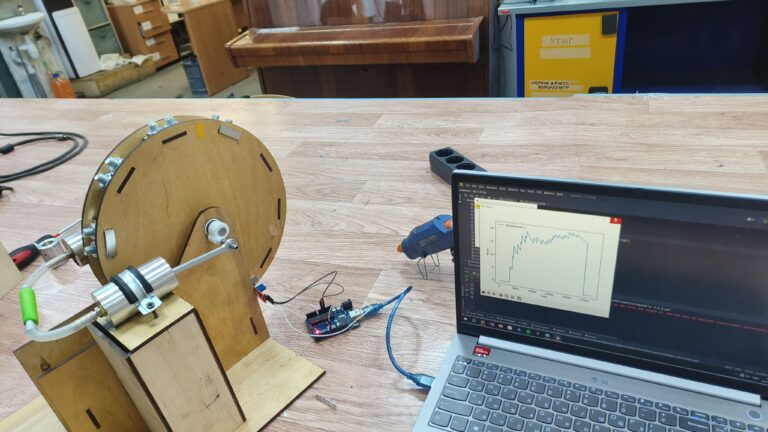New Model Explains Rapid Formation of Gas and Ice Giants

The most common explanation for the formation of planets is the accretion theory. It states that small particles in a protoplanetary disk accumulate under the influence of gravity and over time form increasingly larger bodies called planetesimals. Eventually, many planetesimals collide and merge, forming even larger bodies. For gas giants, these become cores that draw in vast amounts of gas over millions of years.
However, accretion theory cannot explain gas giants that form far from their stars, or the existence of ice giants such as Uranus and Neptune.
The accretion theory dates back to 1944, when Russian scientist Otto Schmidt proposed that rocky planets like Earth formed from “meteorite material.” Another step forward came in 1960, when English astronomer William McCrea proposed the “protoplanetary theory,” which posited that planets formed in the solar nebula. In the decades since, the accretion theory has been refined and expanded, and astronomers now have more observational evidence to support it.
However, there are a few holes in the theory that still need to be plugged.
It suggests that it takes millions of years for a core large enough to become a gas giant, and that protoplanetary disks dissipate too quickly for this to happen. Protoplanets also tend to migrate toward their star as they grow, and they may not have time to gain enough mass before the star engulfs them.
The accretion theory faces another problem that has emerged as we've discovered more exoplanets in other solar systems: It can't explain hot Jupiters and super-Earths.
Over the years, the development of streaming instability and pebble accretion has overcome some of these problems. Streaming instability explains how particles in a disk of gas experience drag and clump together into clumps that are then gravitationally disrupted. Pebble accretion explains how centimeter- to meter-wide particles experience drag and form planetesimals. Both of these theories have strengthened accretion theory, but astronomers still yearn for a full theory of planet formation.
The researchers have developed a new model that includes all the physical processes involved in planet formation. Their work, published in the journal Astronomy and Astrophysics, is called “Sequential formation of giant planets initiated by disk substructure” The lead author is Tommy Chi Ho Lau, a doctoral student at the Ludwig Maximilian University of Munich, Germany.
The new model shows that substructures in the protoplanetary disk, called ring disturbances, can cause several gas giants to form in rapid succession. Crucially, the model is consistent with some recent observations.
Planets form in unstable gas disks around stars. Researchers show how tiny millimeter-sized dust particles accumulate in the disk and become trapped in ring disturbances. The authors call them migration traps. Once trapped, the particles are unable to be gravitationally attracted to the star. These compact regions of the disk accumulate a lot of planet-forming material, creating conditions for rapid planet formation.
“We found the rapid formation of several gas giants from the initial disk substructure,” the researchers wrote in their paper. “A migration trap near the substructure allows cold gas giants to form.”

This process creates a new pressure peak at the outer edge of the planetary gap, which triggers the next generation of planetary formation. The result is the compact chain of giant planets that we see in our solar system. This process is efficient because the first gas giants to form prevent the dust needed to form the next planet from drifting inward toward the star.
“When a planet becomes large enough to influence the gas disk, it leads to renewed enrichment of dust further in the disk,” explains Til Birnstiel, co-author of the paper, Professor of Theoretical Astrophysics at LMU and member of the ORIGINS Advanced Technology Cluster. “In the process, the planet drives the dust, like a shepherd dog chasing its flock, into the region beyond its orbit.”

Then the process repeats. “For the first time, simulations have been able to trace the process by which fine dust turns into giant planets,” says Tommy Chi Ho Lau, lead author of the study.
The Atacama Large Millimeter-submillimeter Array (ALMA) specializes in observing protoplanetary disks. It can see through the dust that prevents planets from forming around young stars. It has found gas giants in young disks at distances of more than 200 AU. In our solar system, Jupiter is about 5 AU away, and Neptune is about 30 AU. The authors say their model can explain all these different possibilities. It also shows how our solar system stopped forming planets after Neptune because all the material was used up.
“This work demonstrates a scenario for the sequential formation of giant planets that is triggered by an initial disk substructure,” the authors write in their conclusion. “Planetary cores rapidly form from the initial disk substructure, which can then be trapped in a migration trap and begin accreting gas.” The results show that “… up to three cores can form and grow into giant planets in each generation.”
How substructures are formed is beyond the scope of this paper and further research is needed to explore this issue.
This work may explain how gas giants form, but it cannot explain how it happens in our solar system. This requires more research into how gas accretion occurs, which is something the astronomical community is actively pursuing.
“Further studies of gas accretion are needed to model the formation time of the giant planets of the Solar System,” the authors conclude.





